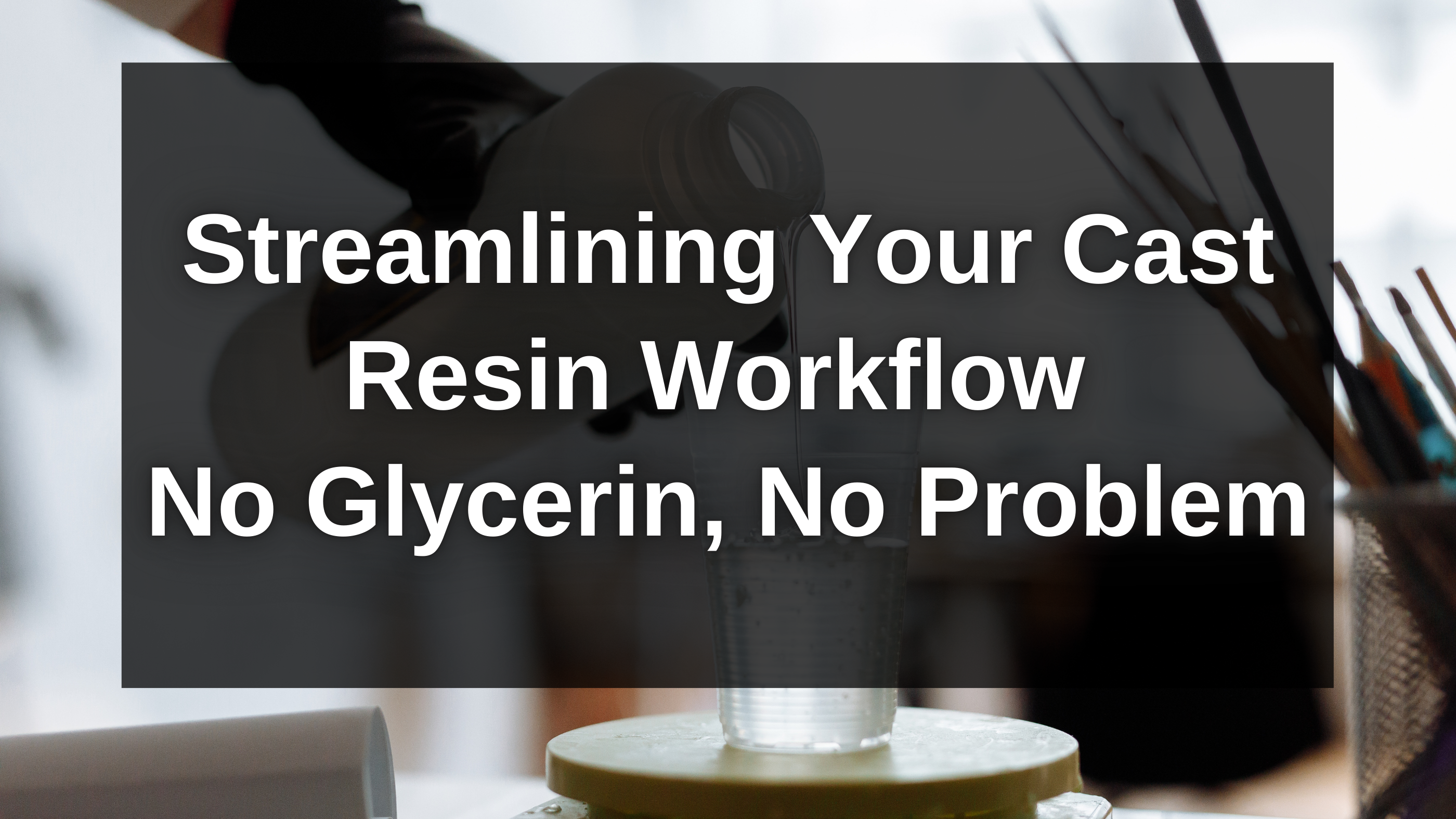In the realm of 3D printing and casting, reducing unnecessary steps to save time and cost has always been our focus. During our recent tests with Cast resin, we determined that submerging the printed part in glycerin for curing before burnout casting is not necessary. We were able to get results as clean as when glycerin was used in the process. This article will explain why and provide a simplified operational procedure.
1. Why Glycerin Was Originally Recommended
Glycerin can block out moisture and oxygen in the air. Thus, it can improve curing efficiency while preventing the model from absorbing water, which can lead to issues when printing. This was recommended at a time when most users had DIY curing equipment that often had insufficient UV power. This recommendation was to help users get as much curing done as possible.
2. Why We Investigated Glycerin as a Non-essential
-
Limited Availability: Some customers face restrictions on purchasing and transporting glycerin in certain countries or regions, which leads to complicated processes and increased costs. To help these customers, we explored methods to cure resin without glycerin while still achieving the same casting results.
-
Viscosity and Cleaning Difficulty: Glycerin is inherently sticky, requiring additional cleaning steps after use. This takes extra time and labor, affecting production efficiency.
-
Extra Processing Time: Soaking resin in glycerin is an extra step that prolongs the manufacturing process. By removing this step, the entire workflow becomes simpler and more efficient.
3. Test Results: Burnout Quality Is the Same Without Glycerin
We conducted an A/B test on the same batch of Cast resin, comparing models cured with glycerin versus those cured without it, and then performed the same burnout casting process (same 6-hour burnout schedule). The results showed that the final cast parts—whether glycerin was used or not—had nearly identical surface details, structural strength, and overall quality. However, we do want to point out that it is important to use high-quality curing equipment to ensure fully cured parts for consistent burnout performance.

(Test A: Burnout result with Glycerin)

(Test B: Burnout result without Glycerin)
4. Recommended Curing Process
While you don’t need to use glycerin before burnout casting, curing the 3D-printed parts remains essential. We recommend the following procedure after the washing process:
-
Ensure Complete Drying: Make sure the print is completely dry before proceeding. This means using some kind of drying device is recommended, like a dehydrator or oven set with a temperature under 50°C.
-
Fully Cure the Resin: After drying, it is important to fully cure Cast resin to ensure clean burnout. It is also important to ensure the print does not absorb moisture, as it may affect burnout results, with water becoming steam and potentially damaging the mold surface. Curing time varies with the light fixture but is most likely to be over 10 minutes or longer.
-
Avoid All-in-One Machines: Avoid using the wash and cure all-in-one machine.
-
Check for Hardness: Fully cured prints should feel hard and a bit brittle.
5. Conclusion
For most customers, eliminating the glycerin-curing step significantly reduces production time and costs while maintaining the same casting quality. It also simplifies material procurement and cleaning, streamlining operations for both 3D printing and casting.
Should you have any questions regarding the use of Cast resin, or need further assistance with curing and burnout procedures, feel free to reach out. We will continue to provide efficient solutions and support to safeguard your 3D printing and casting processes!


3 comments
Daniel N.
I recently switched to the Royal Blue cast resin. It prints great! Unfortunately, I don’t think I’m getting it dry enough before spruing up and pouring investment and I’m getting mold damage. How much time do you recommend drying it for at 50°C? Thank you.
Justin
“oven set with a temperature under 90°C”
What temperature is ideal under 90°C?
How long should we dry for?
Gerson Teixeira
Is this process recomended just for True Blue or it will works with purple resin?